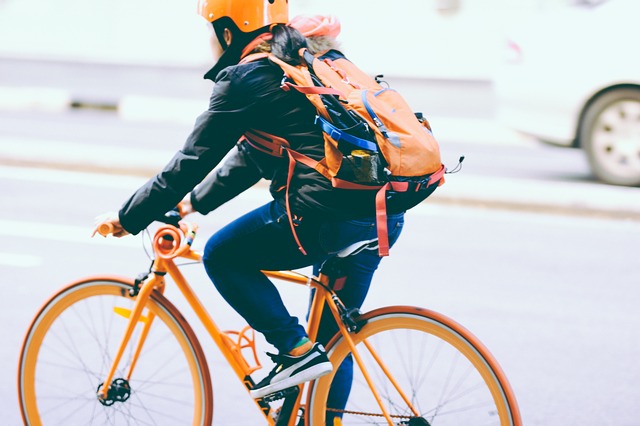Preventing Bicycle Accidents
Last summer saw a rise in motor vehicle-bicycle collisions. According to statistics from Toronto police, 541 bicyclists were hit by cars between June 1st and the third week of September in 2016. Shockingly, this adds up to almost five car-bicycle accidents every day, or one every 4.8 hours! The installation of dedicated, separated bike lanes, such as the pilot project currently located on Bloor Street in the Annex, may go some way toward reducing the number of accidents, but it’s uncertain whether a network of these will be built. One thing that is certain is that when a car collides with a bicycle, the cyclist is at great risk. Finding ways of preventing bicycle accidents is crucial in our city.
Cycling Responsibility
There are plenty of safety tips for cyclists available on the City of Toronto website. This site includes tips such as wearing a helmet at all times, having the right safety equipment, how to cycle with a child on board, and proper cycling procedures in various types of weather. The site also lists the legal requirements for cyclists, and the types of fines that may be levied if you are found to be breaking the law.
But even if you are obeying all of the laws and guidelines in place for cyclists, you may still be in danger of colliding with a motor vehicle. The large amount of traffic on Toronto streets, driver inattention, and lack of visibility all play a part in the current epidemic of accidents. Being aware of the types of situations that pose a particular danger may be the best way to protect yourself.
Seven Dangerous Situations for Cyclists
- Dooring. Virtually every Toronto cyclist has experienced a dooring or near-dooring incident, where a driver (or passenger) opens the car door just as the cyclist is riding by. Injuries resulting from dooring can be painful and debilitating, and, in rare cases, can even result in death. Prevent this accident by being hyper-aware of parked and parking cars. Protect yourself by placing a safe distance between you and the parking lane.
- Side Street. A car pulling out of a side street, parking lot, or driveway can be a problem in two ways. Either the driver doesn’t see you in the lane ahead and the car hits you as it enters traffic, or the driver doesn’t see you coming down the street and pulls out in front of you, causing you to collide with the car. There are a few tactics that can help in this situation, including: using a light if necessary; slow down and let the car go ahead of you, or wave your arms to be sure that the driver notices you.
- Crosswalk. Many cyclists get hit as they bike across a crosswalk from one sidewalk to another. Drivers simply aren’t expecting to see cyclists here. Avoid this accident by not cycling on the sidewalk in the first place (it’s illegal in Toronto,) and walk your bike across like a pedestrian.
- Right Turns. Sometimes a bicyclist stops beside a driver at a red light. When the light turns green, the cyclist pulls straight ahead, but the driver turns right and hits the bike. Avoid this by stopping in the lane directly behind the car rather than beside it. If this isn’t possible, try letting the first car go by, and then making sure the second car sees you.
- Rear-ended # 1. A cyclist often swerves left to avoid a parked car or a pothole, and is then rear-ended by an oncoming car. Avoid this accident by staying out of the parking lane to begin with, and by always looking behind before moving left.
- Rear-ended # 2. A car simply runs into the bicycle from behind because the driver fails to notice the cyclist. This type of collision is difficult to prevent, but it’s also relatively rare and usually happens in conditions of poor visibility. Avoid by making sure you have flashing rear lights, a rear-view mirror, and a reflecting vest or other noticeable clothing.
- Left Turns Sometimes a driver turning left will drive right into a cyclist going straight through the intersection. Avoid this by not passing cars on the right; if you are masked by another car, the left-turn driver may not see you. Also be sure that you have lights and are visible.

Dangerous situations can also be created when cyclists go the wrong direction down a street, or break other traffic laws. As a cyclist, reduce danger by:
- Having the right equipment including helmet, lights, reflectors, and a mirror.
- Using bike lanes or streets with slow-moving or sparse traffic.
- Being aware of possible danger.
Of course, if you are involved in a motor vehicle-cyclist accident, make sure that you immediately seek proper medical attention, as well as advice from a personal injury lawyer who has experience in these types of cases.
Cycling is a great way to get around our city: it’s good exercise; it’s good for the environment, and it’s fun. Make sure you make it as safe for yourself as possible!